Third Party People is a twice monthly series on the people behind the third party publishers that innovate new options for the Pathfinder Roleplaying game, and provide hungry young freelancers a venue for their creations. Today we speak with Jaye Sonia of Storm Bunny Studios, publishers of the Rhune stormpunk campaign setting.
Ryan Costello (RC): What is Storm Bunny Studios all about?
Well, for me, it’s about games – immersive, dark, gritty, and personal games, the sort of material that leaves all assumptions behind. I suppose that’s why our various settings are so unique. When it comes to what we’re about, I’d have to say we’re just “wyrd.”
RC: What three products embody Storm Bunny Studios’ mission statement, and how?
If I had to simplify our approach to gaming into a trinity, it would follow thus: excellence, creativity, and engagement
The Rhune: Dawn of Twilight Campaign Guide would have to be our current flagship book, mostly we released it last spring (the product of our 2014 Kickstarter) and we’ve been promoting it since. It’s a beautiful book that is often compared to larger publishers, which I can only assume means Wizards of the Coast, Paizo, or even Fantasy Flight Games. That’s a good feeling and excellent feedback. But that’s only one book. If this says anything, it’s our commitment to making excellent products.
We’re currently writing a manuscript (through Design Camp) called The Celestial Host which I am very fond of. It’s diverse, immersive, and brings three, historical divine pantheons to your Pathfinder Game. I can’t wait to release this one to the public. It’s a show of some of our creativity, the genius of our patrons truly coming through.
I also think Mike Myler’s The Mists of Akuma is a creative, fun example of our work with another IP. Mike had a specific vision for this setting, and we deviated from our norm to accommodate him. So, while we have a particular approach to design, we’re also open to working with others, and where possible, bringing up the quality for everyone involved. For us, it was a lesson in engagement, which allowed us to develop his vision.
RC: When Pathfinder is as associated with its kitchen sink campaign setting as its rule set, why make your own campaign setting?
Why not? People crave more than just the kitchen sink – they want layered, immersive settings that remind them of their favorite books, regardless of the genre. Take Dark Sun for instances. Every D&D player who loved Dark Sun had probably seen Mad Max and Dune, using both as inspirations for those games. Likewise, there are people who want modern everything, and create new rules to run those games! You can bet they’ll have their own references… I’m all for it. Show me new worlds! Show me unique conflicts!
RC: I’ve seen Rhune incorrectly identified as Steampunk Pathfinder. How do you respond in the face of that kind of mistake?
With a shrug. It’s an easy mistake to make if you don’t read the setting material. People see #stormpunk all the time, they just haven’t made the connection yet. So, we put a hashtag on it!
I am pleasantly surprised each time I hear or see that hashtag now, or when I talk to fans at cons. I look for the positive!
RC: When you design Rhune options, like The Jötunfolk, how compatible do you intend for them to be in a vanilla Pathfinder setting?
I don’t. Everything we design for Rhune is designed against its in-house scale, which is based on Pathfinder.
RC: You are tackling an AP on your own, something few third party publishers have successfully accomplished. What can people expect from Beyond the Glittering Fane in terms of scope, release schedule, similarity in format to a Paizo AP, etc?
Oh man…. It’s been a big challenge. We’ve released the first three books (The Ælven Agenda, Into the Pale Tower, and The Rune of Hope), two of which are alternate starting points for the campaign – either as allies of Ælveheim (Agenda) or as allies of The City States of Vallinar (Pale Tower). The second part of the adventure is laid out in The Rune of Hope. The final book will come out in a few months. It’s called Frigid Reflections. Mike Myler and I wrote it. I also plan on releasing two side adventures for it this year, called Mines of the Missing and The Zypherfan Tournament. These two can be played stand alone, but we’re going to sidebar both, tying them into the other adventures.
From there, it should be pretty clear we’re not doing the standard AP, although I don’t think we exactly shorted the word count – all three of these books accounts for over 200 pages of adventure (averaging 70+ pages of content per book), and the additional books will total in excess of 350 pages of content. So, there’s a lot planned. People are going to be able to play in Rhune!
Of course, because we’re a smaller shop, our production schedule is a lot longer. As much as I’d love to, I can’t hit those monthly markers as often as I’d like, but when we do, it feels good.
RC: What is your gaming background, and how did you come to be so invested in the Pathfinder RPG?
Oh man… I started gaming back in the late 80s, early 90s when I was in my early teens. I started with 1e/2e hybrid, although I did play Marvel Superheroes before that. Heh. I think it was D&D that really pulled me in, although I also played a lot of Rifts, and like all of my friends, Vampire and Mage: The Ascension. I didn’t get into dystopian scene at all, so I sort of missed out on Shadowrun and CyberPunk, although I did own and read both. I suppose it was 2nd edition that really spoke to me, though. I loved those books. Still own many of them!
RC: How has being a third party publisher impacted your home game and other design work?
Ha, it just turned my players into playtesters. In general, I would measure things like rule explanations, rules difficulty, effects on immersion, degree(s) of fun, and if the games carried along well. My “home game” has been on hold for about six months now, but that’s been the case of us just being professionals in various fields. I also run a side game, and irregular online play tests, in addition to running material at cons.
RC: How do you get attention in the crowded Pathfinder third party publisher space?
I think you need to deliver excellent content. Each product is a ping on a radar. If you continually continue to create excellent content, you’ll slowly expand, and will do so with a growing audience. I think that’s important.
Holding people’s attention is as important, as well. This means regular, quality releases. That’s harder for small shops, but we’re getting there!
RC: What are the greatest challenges you face as a third party publisher of the Pathfinder RPG?
Easily, cross-pollination. There’s so much content out there, it’s hard to review all of it. So, if it doesn’t make it up onto an SRD of some sort, there’s a chance we might miss it. There is so much content out on the market, it would be nearly impossible to review all of it before designing our own content. I think that makes it hard for all designers to avoid some cross-design, which can confuse gamers. Most of us just default to Paizo and the OGL.
RC: How do you ensure the highest quality possible for your products, from game balance and the writing to the artwork and graphic design?
Lots of playtest. Here’s looking at you, Kuwaiti Gamers! When it comes to design and graphic design, that’s mostly me. I have a lot of wonderful art, and a larger pool of artists I work with, which means I can start developing the feel of a product as soon as I start to envision it. This means these products get a graphic appeal that matches the content. It’s a very holistic approach to immersion.
RC: What comes first: an idea or a mechanic?
Definitely, the idea. We build bridges with the rules. But our ideas, those are the keys to tomorrow.
RC: What lessons have your experiences taught you about publishing?
I am not a creative genius. I am a surrounded by those people. I listen to them and learn from them on a day to day basis. If gaming has taught me anything, it has been to open up, be collaborative, and listen to other creatives.
RC: What do you look for in a freelancer, and where have you found your strongest freelancers?
I look for intelligence, but with an obvious zest for new approaches to game design. I think some of the best design I saw developed for Rhune came from other designers, all of who continually amazed me as they expanded on the setting. Ironically, I found most of my freelancers through Open Design (back in the day, many of whom have since become friends), as well as through RPG Superstar! I loved following that and although I never won (and can’t actually run anyway), I always found amazing and innovative ideas there. It was a great place to be a Pathfinder Gamer there.
RC: If you could change one thing about Pathfinder, what would it be?
Hah – that would have to be one of the things we are changing about Pathfinder. We’re reimagining things like levels of play (with O7), racial builds (with Bloodlines & Black Magic), player encounter immersion (with Rhune), and a few other ideas for all of the above. As such, I think we’re slowly playing with the core and expanded mechanics in our own way, letting us get a better look at the mechanical whole.
RC: What is a highlight of your experience as a third party publisher?
Honestly, it would have to be the community. I’ve met some really awesome folks here, and a lot of their passion comes through their content. When someone sends me something about Rhune, it’s an added bonus. It’s just really resonates with the greater whole, you know you’re onto something. It’s a cool feeling.
RC: One day you wake up and all your goals for Storm Bunny Studios have been met. What does that day look like, and where do you go from there?
Wow. That’s actually hard to imagine, because my ideal isn’t stasis. I suppose the idea vision for me would be a steadily expanding studio, with several full time freelancers on the books, with a wide audience supporting a number of distinct settings. As a fan of settings such as The Iron Kingdoms, Birthright, Dark Sun and Planescape, I have my own vision of how those lines might grow, although they have different names. You’d know them as Bloodlines & Black Magic, Rhune: Dawn of Twilight, Design Camp, Storm Bunny Presents, and The Mists of Akuma, all of which might grow into something much larger. And in my ideal future, my two other settings – which I have yet to reveal – have manifested, as well. Oh, what a glorious day that will be.


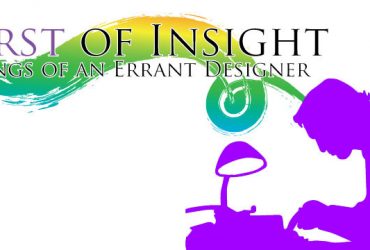
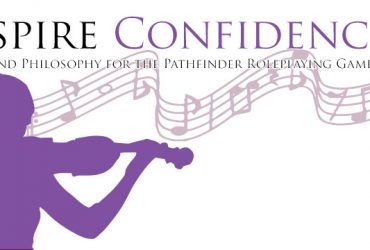
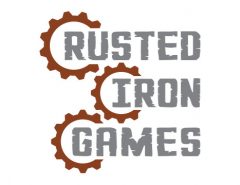
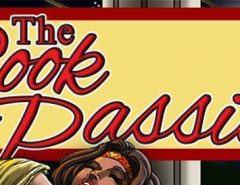
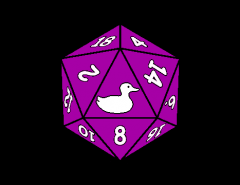
I was not familiar with Storm Bunny Studios until this article. Now, I’m really interested in Stormpunk and am going to investigate it further. Excellent interview.